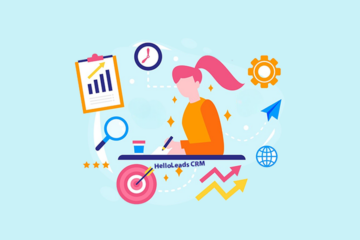
“The only way to do great work is to love what you do. If you haven’t found it yet, keep looking. Don’t settle.” – Steve Jobs
Maintaining high energy levels throughout the workday is essential for productivity and overall well-being. Yet, the demands of a busy schedule, long hours, and constant distractions can often leave us feeling drained and less efficient. Ever hit that 3 pm wall? Your eyelids droop, your brain feels foggy, and that your ever-growing to-do list seems insurmountable. But fear not, fellow worker bee! There’s a way to fight these energy dips and stay laser-focused all day long. The secret? Managing your energy, not just your time.
By learning to manage your energy effectively, you can enhance your focus, performance, and job satisfaction. In today’s fast-paced work environment, feeling fatigued and overwhelmed is all too common. Many of us struggle to keep our energy up while juggling multiple tasks and responsibilities. This constant hustle can take a toll on both our physical and mental health, leading to burnout and decreased productivity. However, by adopting a few simple strategies, you can ensure that you remain energetic and focused throughout the day.
In this blog, we will explore four practical strategies to help you stay energized and alert from morning to evening. Implementing these tips can transform your workday, making it more productive and enjoyable.
1. Short breaks are your friend:
Why It’s Important: Sitting for prolonged periods can lead to physical fatigue and decreased mental alertness. Regular breaks and movement are essential to keep your energy levels high. Taking breaks might seem counterproductive, but they’re actually super important! Incorporating short breaks throughout the day can effectively recharge your brain and leave you feeling refreshed when you return to your tasks .
How to Implement:

Schedule short breaks: Aim to take 5-10 minutes break every 1 hour. Use this time to stand up, stretch, or take a short walk to refresh your mind and body.
Incorporate movement: Whenever possible, opt for walking meetings or stand while talking on the phone. If available, use a standing desk to vary your posture and keep energy levels up throughout the day .
Practice the pomodoro technique: Implement the Pomodoro Technique by working for 25 minutes and then taking a 5-minute break. After completing four cycles, reward yourself with a longer 15-minute break. This method enhances focus, reduces burnout, and maintains productivity.
Benefits: Regular breaks can reduce fatigue, improve concentration, and enhance creativity.
2. Optimize nutrition and hydration
To eat is a necessity, but to eat intelligently is an art. – François de La Rochefoucauld
Why It’s Important: What you eat and drink directly impacts your energy levels and cognitive function. Poor nutrition and dehydration can lead to sluggishness and reduced productivity. The food you consume significantly affects how you feel throughout the day. Skip the sugary snacks and greasy foods that can cause energy crashes. Instead, opt for healthy meals and snacks that provide sustained energy, such as fruits, vegetables, and whole grains. Don’t forget to stay hydrated by drinking plenty of water!
How to Implement:
Healthy snacking: Choose snacks that offer long-lasting energy, like nuts, fruits, and yogurt. Avoid high-sugar snacks that can lead to energy crashes.
Stay hydrated: Aim to drink at least eight glasses of water a day. Keep a water bottle at your desk and set reminders to drink regularly.
Balanced meals: Ensure your meals include a mix of protein, healthy fats, and complex carbohydrates. Avoid heavy meals that can make you feel lethargic.
Benefits: Proper nutrition and hydration can improve your mood, boost cognitive function, and keep your energy levels steady throughout the day.
3. Work when you feel most awake
Why It’s Important: Working during your peak energy periods can significantly impact your productivity and efficiency. Our energy levels naturally fluctuate throughout the day, influenced by factors such as sleep quality, circadian rhythms, and individual preferences. By aligning your work tasks with your peak energy times, you can optimize your performance and output.
How to Implement:
Know your peak hours: Notice when you feel most alert and focused during the day. Are you a morning person who jumps out of bed with tons of energy? Or do you hit your stride later in the evening? Once you identify your peak energy times, schedule your most demanding tasks for those periods. Avoid wasting your most creative moments on routine tasks like answering emails.
Schedule important tasks:
Plan challenging and critical tasks during your peak hours to maximize productivity and focus.
Save easy tasks:
Reserve times when your energy naturally dips for simpler, less demanding tasks.
Benefits:
Boosted productivity: Working at peak times enhances focus and performance.
Better decision making: Peak alertness leads to clearer thinking and improved problem-solving.
4. Manage your work environment

Your outer world is a reflection of your inner world. Clean your desk, and your mind will follow.
Why It’s Important: Your physical and mental environment plays a crucial role in your energy levels. A cluttered or noisy workspace can drain your energy and reduce your ability to focus. Set up your workspace so it helps you focus and avoid distractions. Adjust the lighting so it’s not too bright or too harsh on your eyes. If possible, try to get some natural light. Keeping your desk clean and organized helps reduce clutter and creates a calm atmosphere. Additionally, using blue light-blocking glasses can alleviate eye strain from computer screens.
How to Implement:
Declutter your workspace: Keep your desk organized and free from unnecessary items. A clean workspace can help you feel more in control and less stressed.
Control noise levels:
Use noise-canceling headphones or background music to drown out distractions. Find a quiet area for tasks requiring deep concentration whenever feasible.
Personalize your space: Add elements that make you feel comfortable and motivated, such as plants, photos, or inspirational quotes.
Benefits: An optimized work environment can enhance your focus, reduce stress, and improve overall productivity.
5. Practice mindfulness and stress management
Why It’s Important: High stress levels can deplete your energy and have a negative impact on your mental health . Practicing mindfulness and effective stress management techniques can help you stay calm and focused.
How to Implement:
Mindful breathing: Take a few minutes each day to practice deep breathing exercises. This can help reduce stress and increase oxygen flow to your brain, promoting clarity and calmness.
Meditation:
Incorporate short meditation sessions into your routine. Utilize apps like Headspace or Calm, which offer guided mindfulness practices to help center your thoughts and alleviate stress.
Stress management techniques: Identify your stress triggers and develop strategies to manage them. This might include delegating tasks, setting realistic goals, or seeking support from colleagues.
Benefits: Practicing mindfulness and stress management can enhance your emotional resilience, improve your ability to concentrate, and preserve your energy levels throughout the day.
By integrating these strategies into your daily work routine, you can enhance your overall well-being and productivity. Remember, prioritizing your mental and emotional health is essential for sustained success and happiness.
Share this blog :










